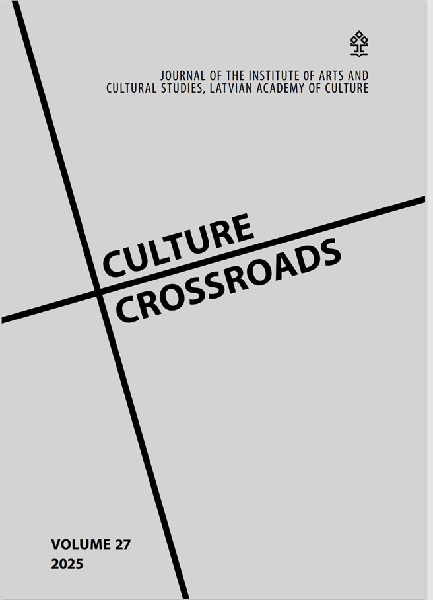THE ANACHRONISM MACHINE
DOI:
https://doi.org/10.55877/cc.vol27.552Keywords:
Artificial intelligence, archive, appropriation, anachronism, historiographyAbstract
The appropriation and reuse of archival documents always involves the dialectical interaction of multiple gazes to produce meaning: the gaze associated with the original document and the gaze of the appropriationist who places the document within a new context. These gazes may be quite disparate in both their intention and effect, but until recently, they could both be assumed to be associated with and, at least in theory, traceable to a human agent. With the advent of AI imaging, the gaze of the appropriationist is no longer guaranteed to be human. Nor is such an AI appropriation necessarily even legible as an appropriation. Indeed, AI imaging has the potential to seamlessly rearrange and stitch together elements of existing images in such a way that the original images may be fractured, combined within the frame, and (re)constituted into a new configuration – an archival refraction, as it were – that originates in a nonhuman agency. What kind of historical evidence or archival practice, if any, can resist this refractive process, and what will be its epistemological and historiographic consequences? This essay argues that AI, in its appropriation and reuse of existing images and sounds, is an anachronism machine. In other words, AI images that appear to be archival introduce the threat of imperceptible anachronism into the historical record in ways that may collapse distinct historical times (and places) into an AI chronotope to which there is no exterior.
.
Downloads
References
Baron, J. (2014). The Archive Effect: Found Footage and the Audiovisual Experience of History. London; New York: Routledge.
Baron, J. (2020). Reuse, Misuse, Abuse: The Ethics of Audiovisual Appropriation in the Digital Era. New Brunswick, NJ: Rutgers University Press.
Berger, J. (2024). Long After Surviving the Nazis, They Use A.I. to Remind the World. New York Times, 2 August. Available: https://www.nytimes.com/2024/08/02/arts/design/ museum-of-jewish-heritage-ai-holocaust.html (viewed 05.12.2024)
Manovich, L. (2002). The Language of New Media. Cambridge, MA: MIT Press. Merriam-Webster Dictionary online. “combine (v.).” Available: https://www.merriam-
webster.com/dictionary/combine (viewed 05.12.2024)
Oxford English Dictionary. s. v. “anachronism (n.),” July 2023. https://doi.org/10.1093/ OED/6842940724
Oxford English Dictionary. s. v. “refract (v.),” March 2024. https://doi.org/10.1093/ OED/1096739292
Prince, S. (1996). True Lies: Perceptual Realism, Digital Images, and Film Theory. Film Quarterly, No. 49 (3), pp. 27–37.
Rancière, J. (2020). Anachronism and the Conflict of Times. Diacritics, No. 48 (2), pp. 110– 124.
Downloads
Published
Issue
Section
License
Copyright (c) 2025 Culture Crossroads

This work is licensed under a Creative Commons Attribution 4.0 International License.


